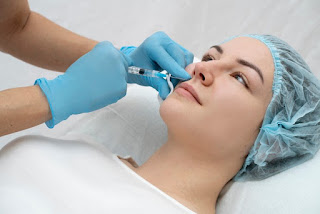A Comprehensive Guide on Best Practices in Administering PRP Therapy for Joint Pain
Platelet-rich plasma (PRP) therapy has emerged as a promising regenerative treatment for joint pain, offering a natural and minimally invasive approach to alleviate discomfort and promote healing. As the popularity of PRP continues to grow, ensuring that it is administered with precision and adherence to best practices becomes essential. This article explores the key considerations and best practices in administering PRP therapy for joint pain to maximize effectiveness and patient outcomes.
Thorough Patient Evaluation
Before initiating PRP therapy, a thorough evaluation of the patient's medical history, joint condition, and overall health is paramount. Understanding the specific nature and cause of joint pain enables healthcare providers to tailor the PRP treatment plan to the individual needs of the patient.
Expertise in PRP Preparation
The success of PRP therapy hinges on the proper preparation of the PRP solution. Healthcare professionals administering PRP should have expertise in drawing blood, processing it to concentrate platelets, and preparing a high-quality PRP solution. This involves using centrifugation techniques and following established protocols to achieve the desired platelet concentration.
Sterile Technique and Infection Prevention
Maintaining a sterile environment during PRP preparation and administration is crucial to prevent infections. Healthcare providers should follow strict aseptic techniques, including using sterile equipment, wearing appropriate protective gear, and ensuring a clean and controlled environment for the entire process.
Image-Guided Injections
For optimal precision in joint targeting, image-guided injections, such as ultrasound or fluoroscopy, are recommended. These technologies allow healthcare providers to visualize the joint space and precisely administer PRP to the affected area, increasing the likelihood of positive outcomes.
Customization of PRP Concentration
The concentration of platelets in PRP can impact its therapeutic efficacy. Tailoring the PRP concentration to the specific requirements of the joint condition and the patient's response is a best practice. This may involve adjusting the centrifugation parameters or using different formulations based on individual needs.
Consideration of Adjunct Therapies
Combining PRP therapy with other complementary treatments, such as physical therapy or joint-specific exercises, can enhance overall outcomes. Healthcare providers should consider developing a comprehensive treatment plan that addresses both the symptomatic relief and the underlying causes of joint pain.
Patient Education and Informed Consent
Informed consent is a critical aspect of any medical procedure, and PRP therapy is no exception. Providing comprehensive education to patients about the procedure, potential risks, benefits, and expected outcomes is crucial. This ensures that patients have realistic expectations and actively participate in their recovery process.
Monitoring and Follow-Up
Regular monitoring of patients following PRP therapy is essential to assess the treatment's effectiveness and address any emerging concerns. Healthcare providers should establish a follow-up schedule to track the patient's progress, adjust the treatment plan if necessary, and provide ongoing support and guidance.
Ethical and Regulatory Compliance
Healthcare providers administering PRP therapy should adhere to ethical standards and comply with regulatory guidelines. This includes transparent communication with patients, accurate documentation of procedures, and compliance with local and national regulations governing regenerative therapies.
Conclusion
Administering PRP therapy for joint pain requires a combination of technical expertise, patient-centered care, and adherence to best practices. By focusing on patient evaluation, precise preparation, sterile techniques, and ongoing monitoring, healthcare providers can optimize the effectiveness of PRP therapy. As the field of regenerative medicine continues to evolve, incorporating these best practices ensures that PRP remains a safe and valuable option for individuals seeking relief from joint pain.



Comments
Post a Comment